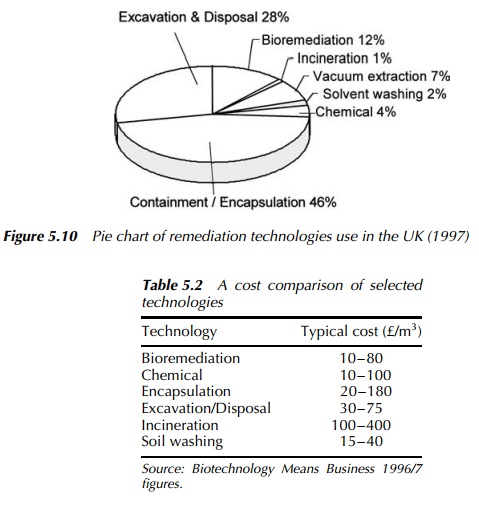Chapter: Environmental Biotechnology: Contaminated Land and Bioremediation
Use of remediation techniques
Use of remediation techniques
As was stated earlier, there are several remediation techniques
available, of which bioremediation is just one and, for the most part, regional
variables define which approach will tend to be the more commonly used for any
given country. In the United Kingdom, guideline figures are available from
BioWise, the government-established body charged with promoting the use of
biotechnology, formerly ‘Biotechnology Means Business’ (BMB). These indicated
that of the seven most commonly available methods in 1997, containment and
encapsulation accounted for 46% of remediation activity in the UK, excavation for
disposal made up 28%, with bioremediation in third place at 12%. The remaining
14% was achieved by vacuum extraction (7%), chemical treatment (4%), solvent
washing (2%) and finally, at 1%, incineration as shown in Figure 5.10.

Though this may be of limited
relevance in universal terms, since, as has been pointed out throughout, the
situation in one country does not necessarily bear any resemblance to that in
another, in many ways, it does serve as a useful illustration of the link
between economics and the uptake of environmental biotechnology. Over the same
period, the costs for remediation were as shown in Table 5.2.
Related Topics